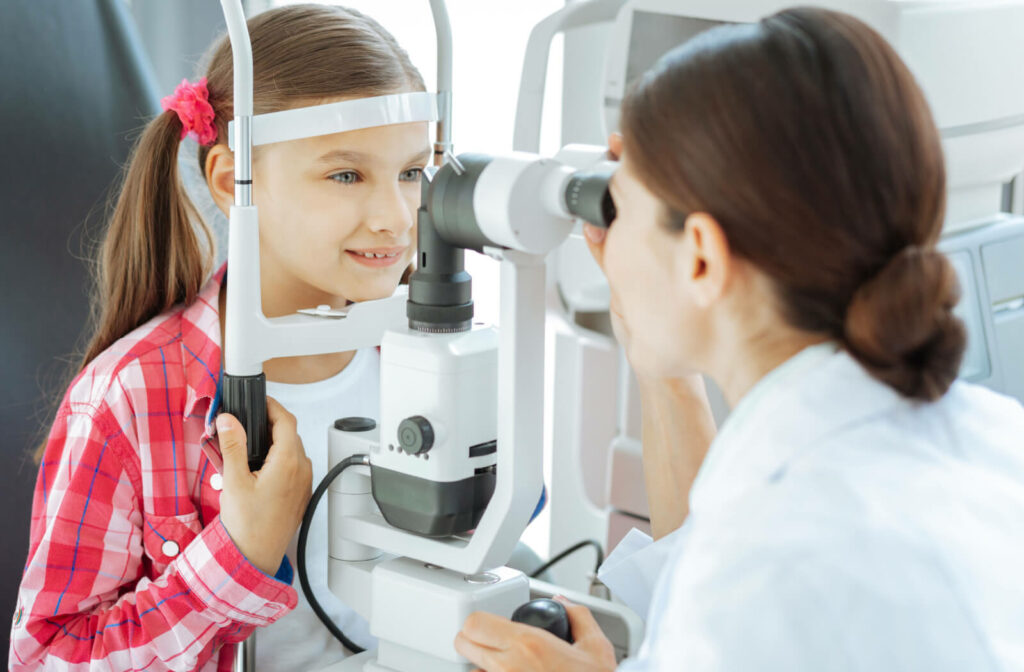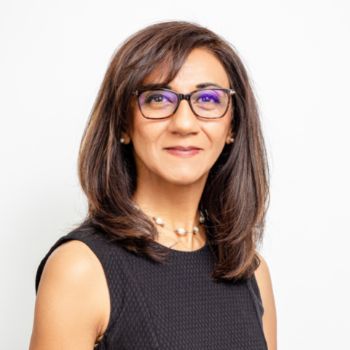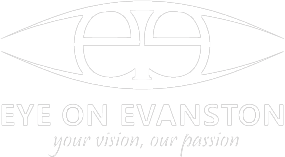We know how precious your kids are and how much their health means to you. We also understand that you can often find yourself in a sea of questions. Especially when it comes to something as important as your child’s eyesight and how often they should get an eye exam.
You should take your child to see a pediatric optometrist for the first time when they’re 6–9 months, once more before they enter school, and then every year until they’re 19.
This is a general guideline since every child is different. While their vision is crucial, identifying issues is not always straightforward. If your kid needs glasses or myopia control, your optometrist may want to see them more often.
Recognizing Vision Problems in Children
Kids often have no frame of reference for what “normal” vision should be, so they can’t always articulate when something’s wrong.
You should watch for signs and symptoms that suggest your child has trouble with their eyesight. Some of these could point to an infection or an untreated refractive error, such as nearsightedness, farsightedness, or astigmatism.
- Eyes that are red, itchy, or watery
- Any eye discharge
- Frequent complaints of headaches or eye pain
- Eyes that appear misaligned
- Squinting or rubbing the eyes
- Covering or closing one eye to see
- Tilting the head to see
- Avoiding bright light or showing high sensitivity to it
- Blinking more than usual
- Holding objects close to their face to see
- Being a bit more clumsy than usual
- Shying away from activities requiring good distance vision
- Difficulty focusing or making eye contact
- Struggling to concentrate, especially at school
- Trouble following objects or people with their eyes
- Avoiding favourite activities like reading, playing sports or watching TV
Remember, you’re not alone in this. If you notice any of these symptoms or are worried about something else regarding your child’s vision, contact your optometrist.
The Importance of Regular Children’s Eye Exams
Children explore, learn, and connect with their world primarily through sight. Any vision issue can potentially impact their physical and cognitive development, socialization, and general well-being. Regular eye exams allow an optometrist to diagnose and treat vision issues.
The Canadian Association of Optometrists recommends the following schedule for eye exams:
- Infants 6–9 months: 1 exam
- 2–5 years: 1 exam
- 6–19 years: Annual exams
Children’s eyes are constantly changing and growing, and as a result, eye conditions can come on quickly and develop rapidly. Your child’s optometrist may want to see them for more frequent check-ups. If you’re ever in doubt, follow your optometrist’s recommendation. A pediatric optometrist can track your child’s development, look for potential issues, and offer proactive treatments.
What Happens During a Kid’s Eye Exam?
Whenever you bring your family in for an eye exam, your optometrist checks for overall health, vision acuity, and common eye conditions.
Myopia
Have you ever heard of nearsightedness? That’s what eye experts might call myopia. It’s pretty common, with some predictions saying that as much as 50% of the population will have myopia by 2050. If your child has myopia, they’ll see nearby objects clearly, but things further away might appear blurry.
Myopia is progressive, so it can worsen as your kid ages and lead to serious complications later in life. An optometrist will usually recommend myopia control to try to slow myopia’s progression.
Strabismus
Also known as crossed eyes, strabismus is when the eyes don’t point in the same direction, appearing misaligned. It’s usually caused by eye muscles that don’t work together properly and can significantly impact your child’s vision.
It almost exclusively occurs in childhood, though it can occasionally develop in adulthood, usually after trauma. Some very young infants (under 6 months) may appear to have misaligned eyes, but it’s not always strabismus! Still, it’s better to be safe. Kids won’t outgrow strabismus without treatment. And if left alone, the turned eye could weaken and become a “lazy eye,” also known as amblyopia.
Amblyopia
Amblyopia refers to when one eye is stronger than the other. Even though this is sometimes called lazy eye, the weaker eye isn’t actually “lazy.” There are many causes of amblyopia. The most common is a large difference between prescriptions in the eyes.
The eye with the weaker prescription will send clear images to the brain, but the eye with the stronger prescription doesn’t see things as well, so the brain will ignore the blurry images sent from that eye.
After a while, the connection between the eye with the stronger prescription and the brain becomes weaker and stops working as well as the other.
Amblyopia can potentially cause permanently reduced vision or even blindness in that eye. But your optometrist can diagnose amblyopia with an eye exam, and it can be prevented with timely treatment.
Keeping Up with Eye Exams
Eye exams aren’t just about your kid’s eye health; it’s about their overall well-being and ability to learn, play, and explore the world around them. It’s about those priceless moments when they spot a rainbow after a rainstorm or read their favourite book for the umpteenth time.Regular eye exams are one of the best ways to support your child’s eyes and spot any potential issues early. At Eye on Evanston, we’re passionate about helping kids see the world clearly. If it’s time for your kid’s next eye exam, we’d love for you to book your appointment with us!





